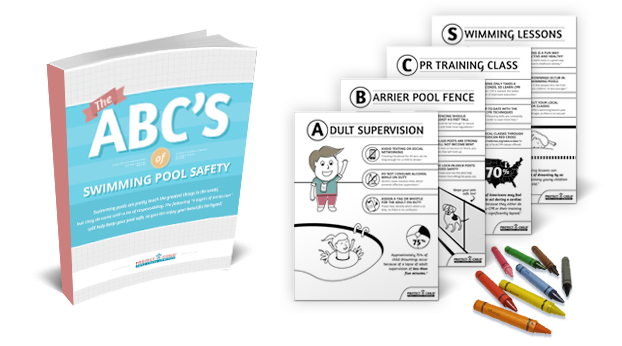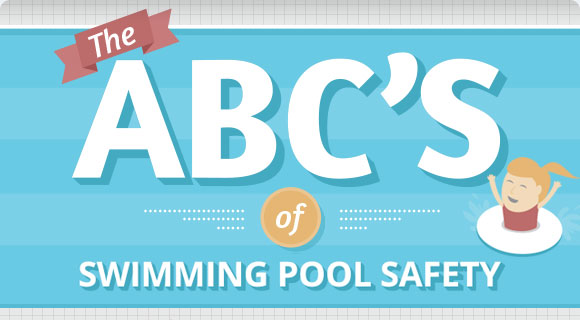By this time of year, most people have opened their swimming pools and are ready for Memorial Day weekend, and, soon to follow, summer fun!
That is why May is recognized as National Water Safety Month. It is a great time to reflect on the safety of your pool area and your family’s pool safety preparation.
To make it a bit easier to prepare this year, we decided to illustrate four of the top layers of protection for your swimming pool. Follow the ABC’S of Swimming Pool Safety: Adult Supervision, Barrier Pool Fencing, CPR Training and Swimming Lessons shown below. You’ll also find some valuable tips and facts for each of these layers of protection. This will help you to keep your family safe around the pool, so you can enjoy your beautiful backyard.
Download the Print-Friendly eBook & Coloring Book for Our ABC’S of Pool Safety!
These FREE downloads provide you with a great way to review pool safety best practices with your family, while also providing a little coloring fun for the kids!

ADULT SUPERVISION
- Avoid texting or using social media on your phone—Checking Facebook for 20 seconds can be long enough for a child to drown.1
- Do not consume alcohol while on duty—Alcohol slows reaction time, which prevents effective supervision.2
- Assign a tag or whistle for the adult on duty—These help identify which adult is on duty, so there is no confusion.
Approximately 75% of child drownings occur because of a lapse of adult supervision of less than five minutes.3
BARRIER POOL FENCE
- Pool fencing should be four to five feet tall – Fence should be tall enough to secure your pool and meet local regulations.4
- Fiberglass posts are strong and will not become bent – Children may lean on or bounce off of the fence, so you want posts that will hold up.
- Choose lock-in-deck posts for added safety – Posts that twist-lock into the deck help prevent children from lifting the posts out.
A barrier fence separating a pool from the home reduces a child’s risk of drowning by 83%, compared to a property-line fence.5
CPR TRAINING CLASS
- Drowning only takes a few seconds, so learn CPR—The quicker CPR is started, the better the chance of saving a life.5
- Stay up to date with the latest CPR techniques—Results of lifesaving skills are constantly studied in order to save more lives.6
- Find local classes through the American Red Cross – Visit http://redcross.org/take-a-class for latest listings of local CPR classes offered.
Seventy percent of Americans may feel helpless to act during a cardiac emergency, because they either do not know CPR or their training has significantly lapsed.7
SWIMMING LESSONS
- Swimming is a fun way to be active and healthy – Learning to swim is a great way to help prevent childhood obesity.8
- Most drownings occur in home swimming pools – Children between the ages of 1 and 4 years of age have the highest drowning rates.5
- Check out your local YMCA for classes – The YMCA offers swimming lessons year round for all ages, so there is no excuse!
Formal swimming lessons can reduce the risk of drowning by as much as 88% among young children ages 1—4 years old.9
SOURCES:
- http://health.ny.gov/publications/3112
- http://pubs.niaaa.nih.gov/publications/aa63/aa63.htm
- http://healthandwelfare.idaho.gov/health/injuryprevention/drowning/tabid/1390
- http://cpsc.gov/en/media/documents/safety-education/safety-guides/sports-and-recreation/pool-and-spa/pooll
- http://cdc.gov/homeandrecreationalsafety/water-safety/waterinjuries-factsheet.html
- http://faculty.deanza.edu/donahuemary/stories/storyreader$2608
- http://www.heart.org/HEARTORG/CPRAndECC/WhatisCPR/CPRFactsandStats/CPR-Statistics_UCM_307542_Article.jsp
- http://cdc.gov/healthyweight/children
- http://cdc.gov/features/drowningprevention




